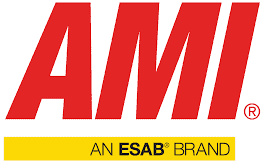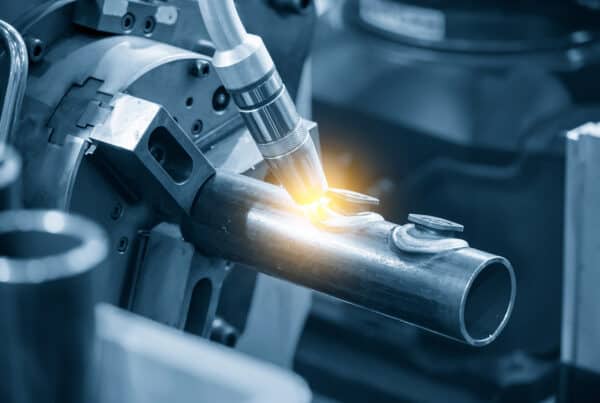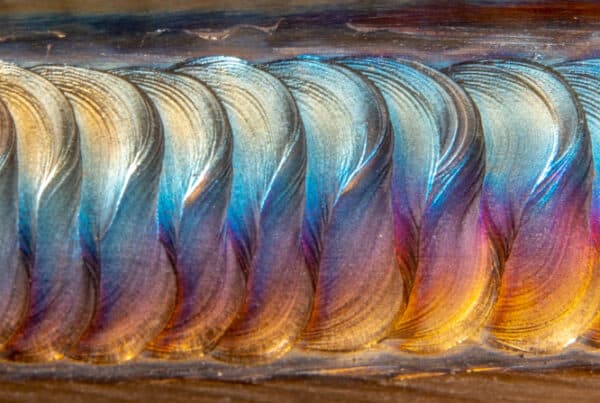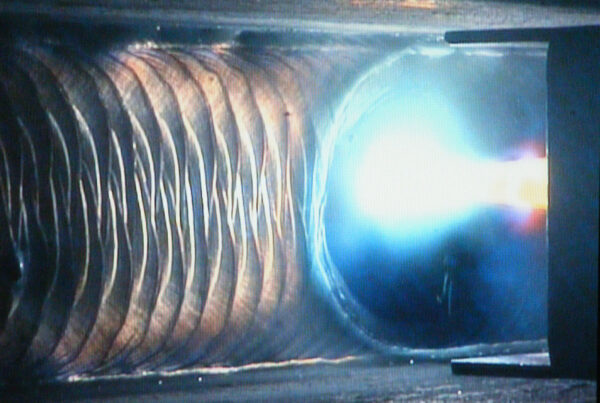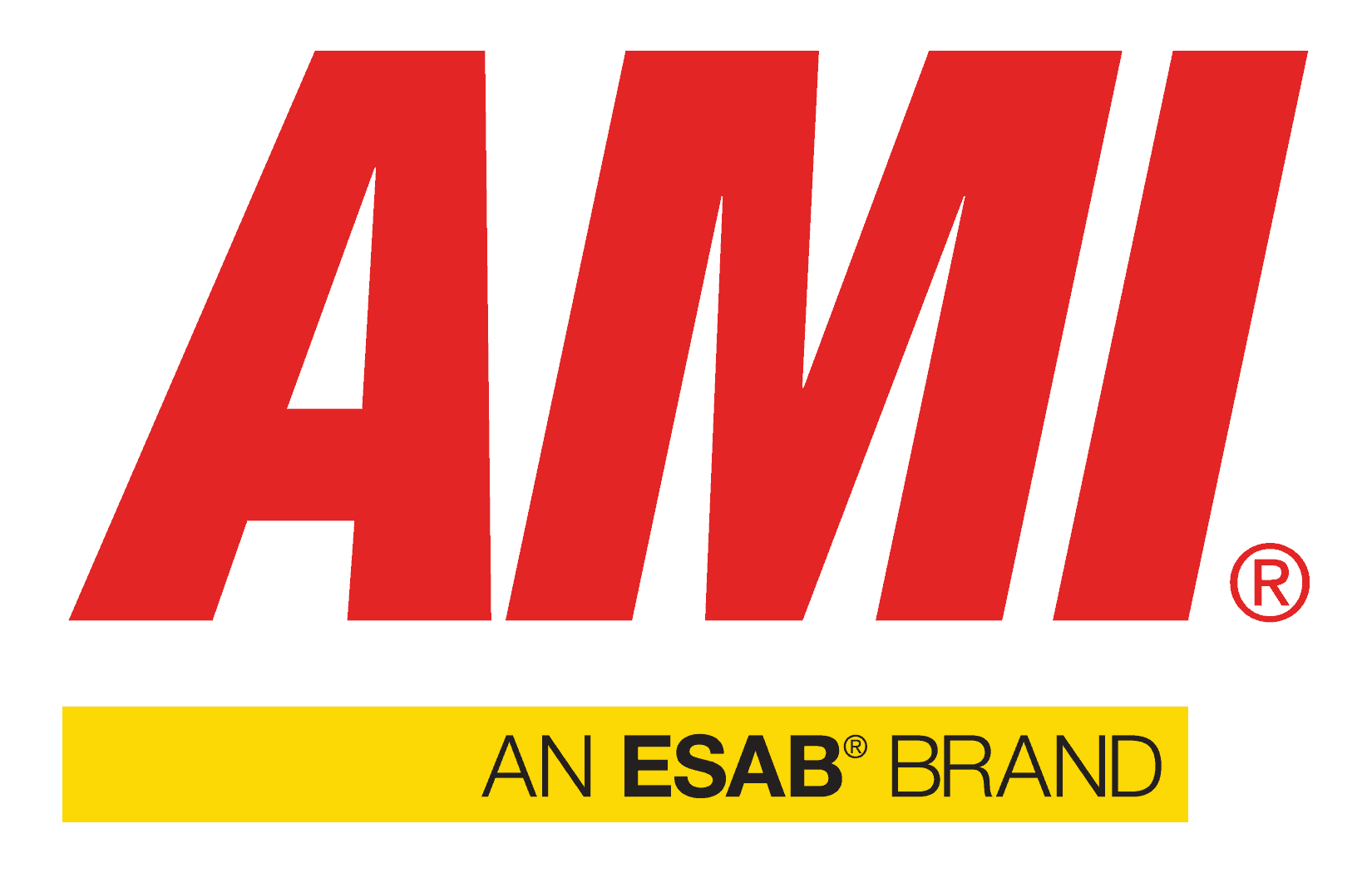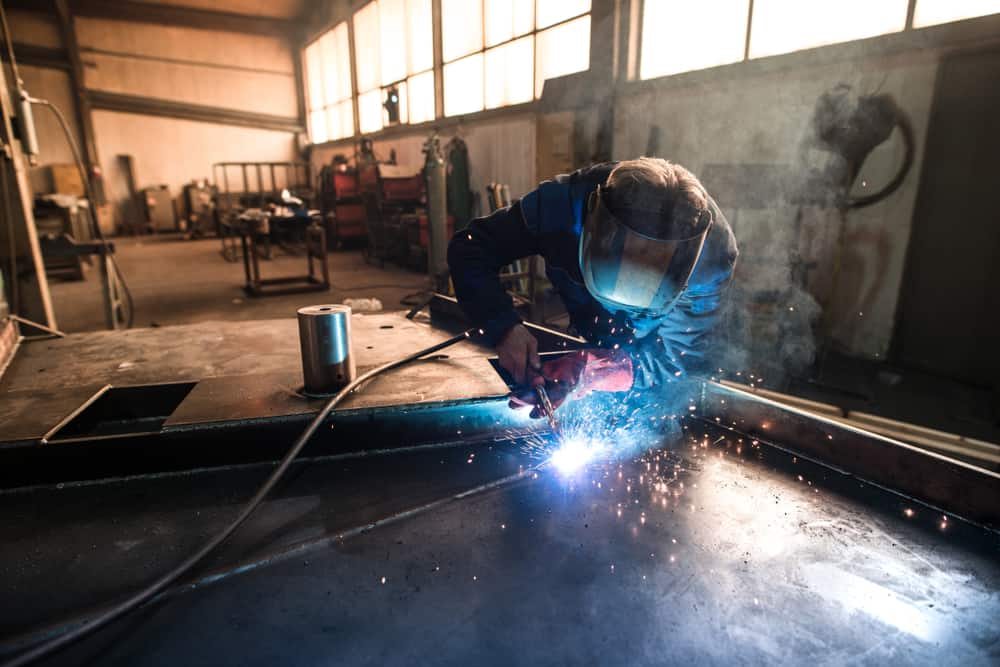
Pipe welding is particularly challenging because it requires welders to continuously transition through flat, horizontal, vertical, and overhead positions. To address these pipe welding challenges and ensure high-quality, repeatable welds, orbital welding was developed.
For optimal results, orbital welding systems must be programmed with these welding techniques. Likewise, machine operators should be able to read a molten puddle. Understanding different welding techniques is a key component in orbital welding success.
Preparation Is the Greatest Welding Technique
Welders who are worth their salt know that the best welding technique of all is thorough preparation. Like all arc welding methods, welding preparation for orbital GTAW involves a lot cleaning—of the weld and the welding work area—to prevent contamination. This preparation should include checking the machining of the joint preparation in process such as narrow groove welding. However, preparation can include preparing the molecular structure of the metal.
Heat applied to the joint prior to welding can relieve existing stresses within the metal. It can also reduce the amount of new stress introduced into the metal during welding. By preheating the metal and bringing down the temperature gradient the metal needs to climb, welders can reduce distortion. This is an especially beneficial welding technique for stainless steel tube welding, where heat expansion and contraction can be extreme. Heating the metal after welding characterizes another welding technique that can reduce distortion by slowing the cooling process. Different welding techniques used during arc welding can result in the formation of a cleaner tighter bead.
Different Welding Techniques Used in Arc Welding Processes

The most familiar welding technique is the side-to-side manipulation of a weld in progress, better known as oscillation. This can take on a variety of patterns during the weld where changes in direction affect the flow and fusion of the metal. Pausing at various points during the weld can also enhance weld penetration. At it’s most basic, oscillation describes a side-to-side weave pattern. However, more complicated maneuvers can help a weld climb a vertical surface, restrain it from flowing to quickly down a vertical surface, or just help it stay inside an overhead weld. Examples of a oscillation patterns a welder might choose can be seen below.

Different oscillation patterns imply different welding techniques, as the rate of travel and dwell time of the electrode help determine the geometry of weld joints. An increase in welding speed can result in a good-looking weld with no penetration or fusion; therefore, a welding parameter will need to pass nondestructive testing in addition to a visual inspection.
In manual arc welding, weld oscillation is something the welder feels their way through. In orbital welding, it’s controlled by the welding power supply. The patten of oscillation is set by programming travel speed, arc gap, and both vertical and horizontal movement relative to the weld.
Different Welding Techniques for Different Welding Positions
Pipe and tube welding are considered difficult because the welder will move through every welding position over the course of the weld: the flat, vertical, horizontal, vertical again, and all the way back to flat. As they transition, the direction of welding will switch from downhill to uphill, or vice versa. Welding oscillation patterns can help manage these changes in position.
| Weld Position | Image | Description | |
| 1G | Horizontal Rolled Position |  |
In the 1G pipe welding position, the pipe is mounted horizontally but is free to roll. This takes the burden of movement off the welder and allows them to weld in the flat position with a fixed arc length. |
| 2G | Vertical Position |  |
In 2G pipe welding, the pie is mounted vertically, and welding takes place in the horizontal position. The welder must maintain a consistent arc length while working. |
| 5G | Horizontal Fixed Position |  |
In 5G pipe weld, the pipe is mounted horizontally but isn’t free to rotate. This means the welder must move around the entire circumference, i.e., through all welding positions, maintaining arc length and travel speed through skill and physical strength. |
The specific challenges of different welding positions and the associated arc welding processes can be easily addressed through the use of different welding techniques. Automated welding processes such as orbital welding can help welders employ these techniques reliably to ensure pipes and tubes are welded correctly and projects are completed on time.
Deploying Orbital Welding for Different Welding Techniques
Orbital welding automates the process for bonding pipes and tubes by letting the electrodes that create the work area, including weld puddle and coverage, rotate continuously around the outer surface of the workpiece. Under the guidance of a programmed welding controller, automated orbital welding can be especially helpful for maneuvering vertical and overhead welding positions and improving the different welding techniques.
Deploying orbital welding for overhead pipe welding, uphill welding, or downhill welding offers the following advantages:
- Ensures worker safety: A mechanized welding process removes the welder from the fall line of the molten metal in the overhead welding position. By operating a weld head through a remote pendant, a welder has far more flexibility to efficiently weld pipes located in difficult or previously inaccessible positions.
- Enhances weld purity: In manual pipe welding that requires multiple passes, a welder can make a mistake while striking an arc that disrupts the shielding gas and contaminates the weld. Orbital welding eliminates such risks of weld contamination by making each pass in a continuous circuit around the circumference of the pipe. By minimizing welder fatigue in pipe welding uphill or downhill manually, orbital welding enables operators to weld large sections of pipeline at an exceptional speed and yield high-quality welds.
- Promotes weld consistency: In orbital welding, the consistent travel speed of the torch is maintained through weld heads that are either clamped around a pipe or mounted to it. And by maintaining a consistent distance from the weld around the entire pipe, orbital welding helps ensure weld consistency.
Automated orbital welding can help accomplish flawless, high-quality pipe welds through the optimization of different welding techniques. The benefits of orbital welding in high-specification and low-tolerance environments are best realized with state-of-art equipment, materials, and support.
Arc Machines, Inc. is an industry leader in developing advanced and high-quality welding equipment. For inquiries on how we can help you apply orbital welding to different welding techniques, contact sales@arcmachines.com. For service inquiries, contact service@arcmachines.com. Contact us to learn more about custom orbital welding solutions.
